Kella tagasikerimine
“Oleme avastanud viisi pidurdamaks veresoonte vananemist, suurendades kehas looduslikult esinevate molekulide olemasolu, mis suurendavad füsioloogilist reageerimist treeningule,” ütles vanemteadur David Sinclair, Harvardi meditsiinikooli geneetika osakonna professor.
We are as old as our arteries, the adage goes, so could reversing the aging of blood vessels hold the key to restoring youthful vitality?
The answer appears to be yes, at least in mice, according to a new study led by investigators at Harvard Medical School.
The research, published March 22 in Cell, identifies the key cellular mechanisms behind vascular aging and its effects on muscle health and has successfully reversed the process in animals.
Using the synthetic precursors of two molecules naturally present in the body, the scientists also managed to reverse blood vessel demise and muscle atrophy in aging mice, boosting their exercise endurance in the process.
The achievement, the team said, paves the way to identifying related therapies for humans.
“We’ve discovered a way to reverse vascular aging by boosting the presence of naturally occurring molecules in the body that augment the physiological response to exercise,” said study senior investigator David Sinclair, professor in the Department of Genetics at Harvard Medical School and co-director of the Paul F. Glenn Center for the Biology of Aging at Harvard Medical School.
As old as our blood vessels
Sinclair and team set out to unravel the mechanisms behind one of biology’s inevitabilities: aging.
As we age, our tiniest blood vessels wither and die, causing reduced blood flow and compromised oxygenation of organs and tissues. Vascular aging is responsible for a constellation of disorders, such as cardiac and neurologic conditions, muscle loss, impaired wound healing and overall frailty, among others. Scientists have known that loss of blood flow to organs and tissues leads to the build-up of toxins and low oxygen levels. The so-called endothelial cells, which line blood vessels, are essential for the health and growth of blood vessels that supply oxygen-rich and nutrient-loaded blood to organs and tissues. But as these endothelial cells age, blood vessels atrophy, new blood vessels fail to form and blood flow to most parts of the body gradually diminishes. This dynamic is particularly striking in muscles, which are heavily vascularized and rely on robust blood supply to function.
In a series of experiments, Sinclair and team found that reduced blood flow develops as endothelial cells start to lose a critical protein known as sirtuin1, or SIRT1. Previous studies have shown that SIRT1 delays aging and extends life in yeast and mice.
SIRT1 loss is, in turn, precipitated by the loss of NAD+, a key regulator of protein interactions and DNA repair that was identified more than a century ago. Previous research by Sinclair and others has shown that NAD+, which also declines with age, boosts the activity of SIRT1.
A stimulating conversation
The study reveals that NAD+ and SIRT1 provide a critical interface that enables the conversation between endothelial cells in the walls of blood vessels and muscle cells.
Specifically, the experiments reveal that in young mouse muscle, SIRT1 signaling is activated and generates new capillaries, the tiniest blood vessels in the body that supply oxygen and nutrients to tissues and organs. However, as NAD+/SIRT1 activity diminishes over time, the study found, so does the blood flow, leaving muscle tissue nutrient-deprived and oxygen-starved.
To determine SIRT1’s role in exercise-induced blood vessel growth, the researchers observed how SIRT1-deficient mice responded to exercise. After a month-long training regimen, the hind-leg muscles of SIRT1-deficient mice showed markedly diminished ability to form new blood vessels in response to exercise compared with same-age mice that had intact SIRT1 in their endothelial cells.
Exercise-induced blood vessel formation is known to occur in response to growth-stimulating proteins released by muscles under strain. SIRT1, however, appears to be the key messenger relaying growth-factor signaling from muscles to blood vessels, the study found.
Experiments showed that endothelial cells lacking SIRT1 were desensitized to the growth-stimulating proteins released by exercised muscles.
“It’s as if these cells had grown deaf to the signals that muscles sent their way,” Sinclair said.
The observation, he added, explains why age-related loss of SIRT1 leads to muscle atrophy and blood vessel demise.
Exercise in a pill?
The scientists set their sights on NAD+, a molecule conserved across many life forms, known to decline with age and previously shown to stimulate SIRT1 activity.
“We reasoned that declining NAD+ levels reduce SIRT1 activity and thus interfere with aging mice’s ability to grow new blood vessels,” said study first author Abhirup Das, who conducted the work as a post-doctoral fellow in Sinclair’s lab, currently a visiting scholar in genetics at Harvard Medical School and a post-doctoral research fellow at the University of South New Wales School of Medical Sciences.
To test this premise, scientists used a chemical compound called NMN, a NAD+ precursor, previously shown to play a role in repairing cellular DNA and maintaining cell vitality.
In lab dish experiments, endothelial cells from humans and mice treated with NMN showed enhanced growth capacity and reduced cell death.
Next, the team gave NMN over two months to a group of mice that were 20 months old—the rough equivalent of 70 in human years. NMN treatment restored the number of blood capillaries and capillary density to those seen in younger mice. Blood flow to the muscles also increased and was significantly higher than blood supply to the muscles seen in same-age mice that didn’t receive NMN.
The most striking effect, however, emerged in the aging mice’s ability to exercise. These animals showed between 56 and 80 percent greater exercise capacity, compared with untreated mice the study showed. The NMN-treated animals managed to run 430 meters, or about 1,400 feet, on average, compared with 240 meters, or 780 feet, on average, for their untreated peers.
To see whether the effects of NMN could be further augmented, the researchers added a second compound to the treatment regimen. The compound, sodium hydrosulfide (NaHS), is a precursor to hydrogen sulfide, which also boosts the activity of SIRT1.
A group of 32-month-old mice—the rough equivalent to 90 in human years—receiving the combo treatment for four weeks were able to run, on average, twice as long as untreated mice. In comparison, mice treated with NMN alone ran 1.6 times farther, on average, than untreated animals.
“These are really old mice so our finding that the combo treatment doubles their running capacity is nothing short of intriguing,” said study co-author James Mitchell, associate professor of genetics and complex diseases at the Harvard T. H. Chan School of Public Health. Research led by Mitchell and published in the same issue of Cell also found sodium hydrosulfide to augment blood vessel formation in the muscles of mice.
The researchers say their findings may pave the way to therapeutic advances that hold promise for the millions of older people for whom regular physical activity is not an option.
Read Full Article/ published By Harvard Medical School/ MARCH 22, 2018







